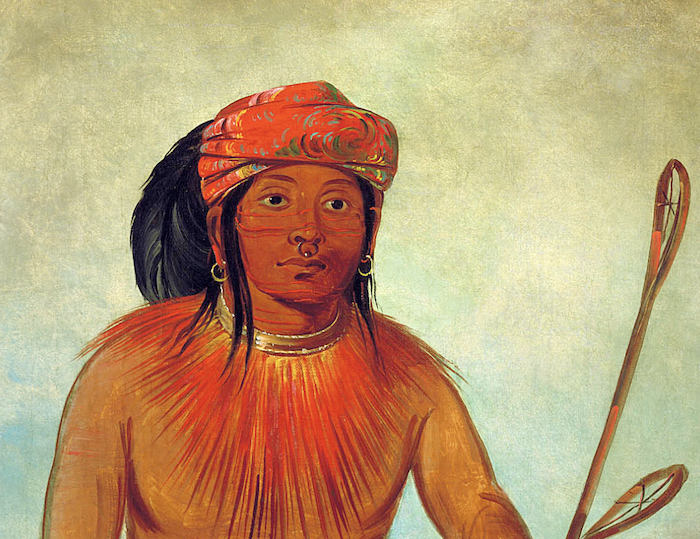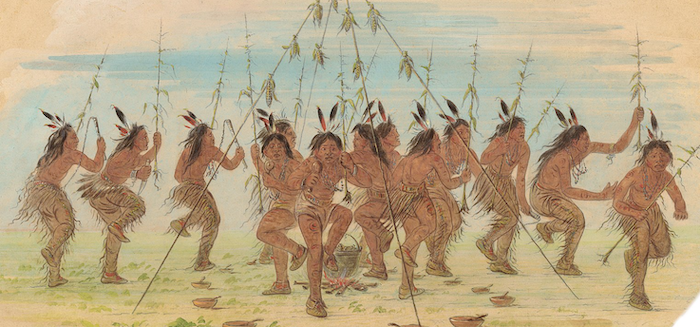
Choctaw Nation
The Choctaw people, an indigenous tribe of North America, have a storied history dating back centuries. Originating from the southeastern United States, they have forged a unique cultural identity marked by their agricultural expertise, spiritual beliefs, and communal traditions.
Range:
The Choctaw are native to the southeastern United States, specifically the modern-day states of Mississippi, Alabama, Louisiana, and Florida. They were one of the "Five Civilized Tribes" due to their adoption of certain European customs and governmental structures.
Diet:
Agriculture played a central role in the Choctaw way of life. They were adept farmers, cultivating maize (corn), beans, and squash—the three cornerstone crops known as the "Three Sisters." Corn, however, was the most important crop, and accounted for up to two-thirds of their entire food supply. Choctaw farmers grew the "Three Sisters" in the same fields, which served to preserve the soil and prevent erosion. The Choctaw were prolific and hard-working farmers and often grew a surplus of crops that enabled them to trade with neighboring tribes less adept at farming such as the Chickasaw. Additionally, they gathered wild plants, nuts, and berries from the rich forests of the Southeast, including strawberry, blackberry, huckleberry, plum, muscadine, crabapple, persimmon and red mulberry. Some of these fruits were dried and stored for use in winter. Hunting and fishing were also significant components of their diet, providing them with a diverse range of sustenance.
Tullockchishko - Legendary Choctaw stickball player |
Homes:
Choctaw homes were built from planks of wood tied together with stalks of cane or branches, buried in the ground for support. The walls were then plastered with mud, with only one small door as an opening. The roof was either thatched from grasses, or made from the bark of Cypress or Pine. Choctaw people lived a spartan existence inside their homes. They used cane beds for their simple furniture, chairs, and beds. Reeds tied together served as storage containers.
Religion and Beliefs:
The Choctaw people celebrated various gods and deities. The sun god, Hashtahli, was the most important of the gods, and was responsible for the creation of the Earth, the sky, and all living creatures. They believed in the positive spirit, Nanapesa, who was said to breathe life into all people and animals, and the negative spirit, Nalusa Falaya, who caused misfortune, sickness, and death. Ishkitini, the horned serpent, was an underwater god that delivered rain and fortune when appeased, but was also responsible for floods, storms, and natural disasters when angered.
The Choctaw believed that they came from a sacred mound in Mississippi known as Nunih Waya. In Choctaw mythology, this mound is considered a living being and it forms a connection between the Choctaw and their ancestral lands. They also believed that each person had two souls: one that never dies, known as Shilombish, and one that dies with the body. Shilombish was said to be able to travel between the lands of the living and the lands of the dead.
Traditions:
One of the most important Choctaw ceremonies was the Green Corn Festival, or Busk, which celebrated the harvest of corn and the renewal of life. It involved feasting, dancing, the settling of differences, and review of tribal laws.
George Caitlin's Green Corn Dance - Minatarrees, 1861 |
Sports were essential in Choctaw life. They played a form of stickball called Kapucha Toli, which involved two teams competing to score points using long curved sticks and a leather ball. Kapucha Toli was played to settle differences, resolve conflicts, avoid war, toughen young soldiers, or, to predict the future or seek solutions for disease or famine. As many as several hundred warriors could play on plains or fields between villages that could span miles. Rules for specific matches were established the day before a game was to be played. The match itself could last from sunup to sundown. Medicine men would lead rituals and perform the duties of coaches.
 |
Ball-Play Dance by George Caitlin, 1834
|

